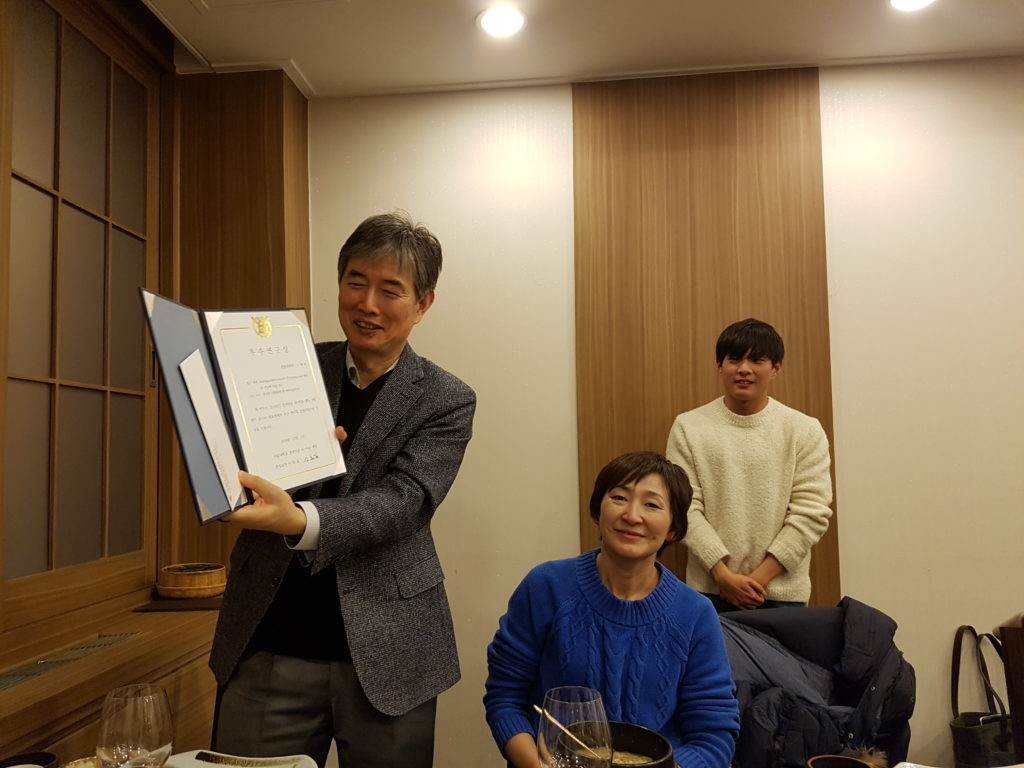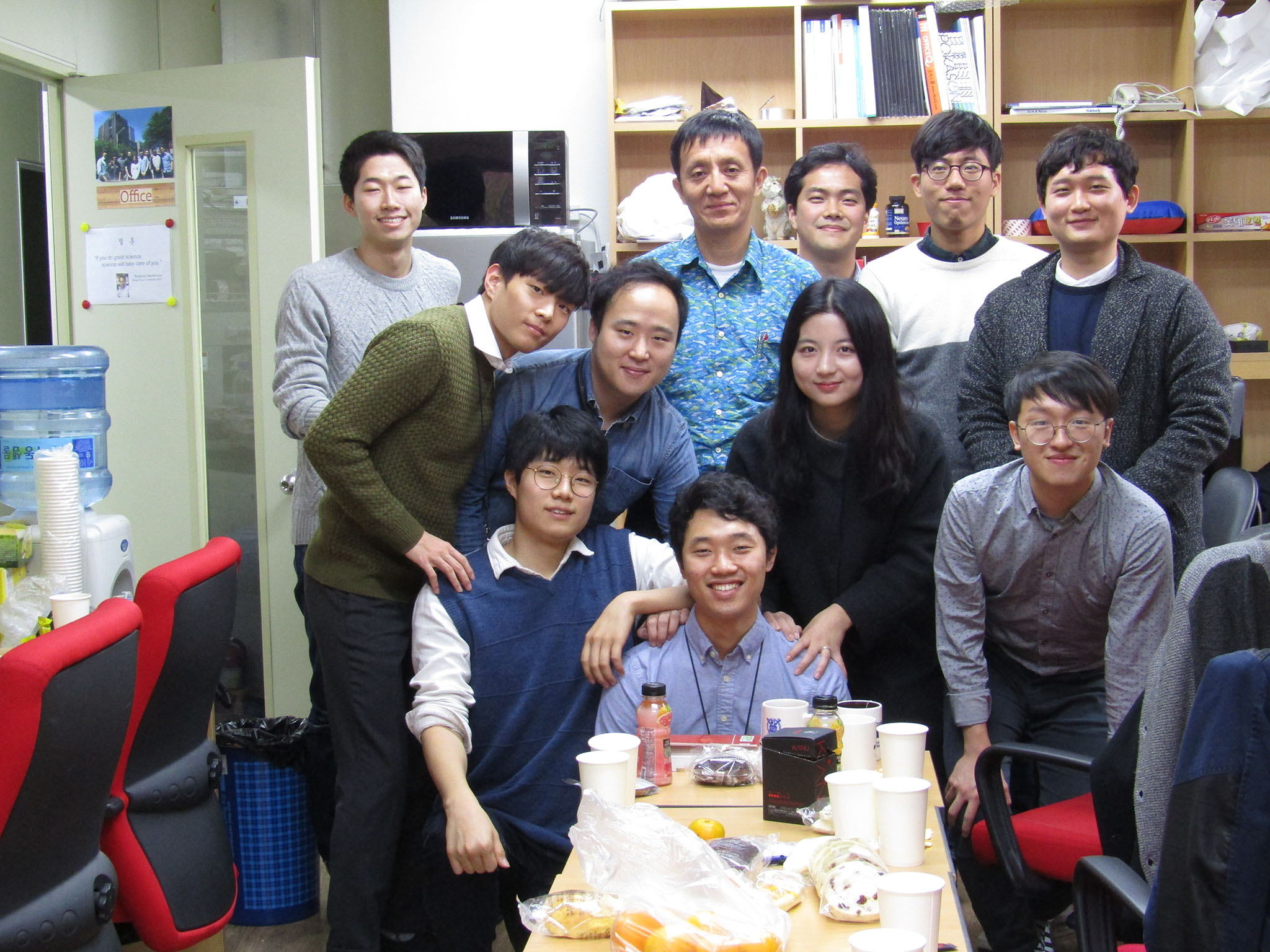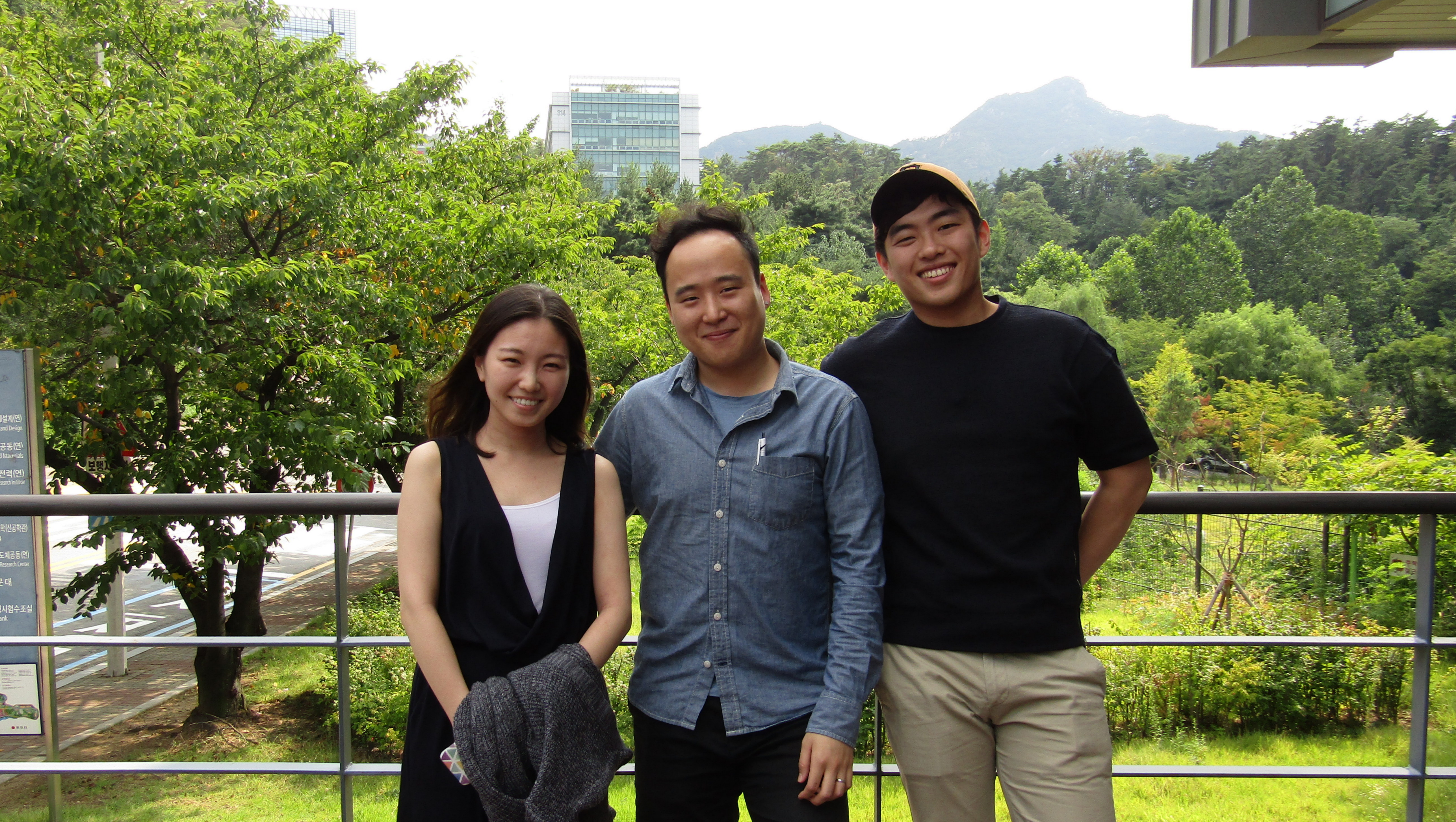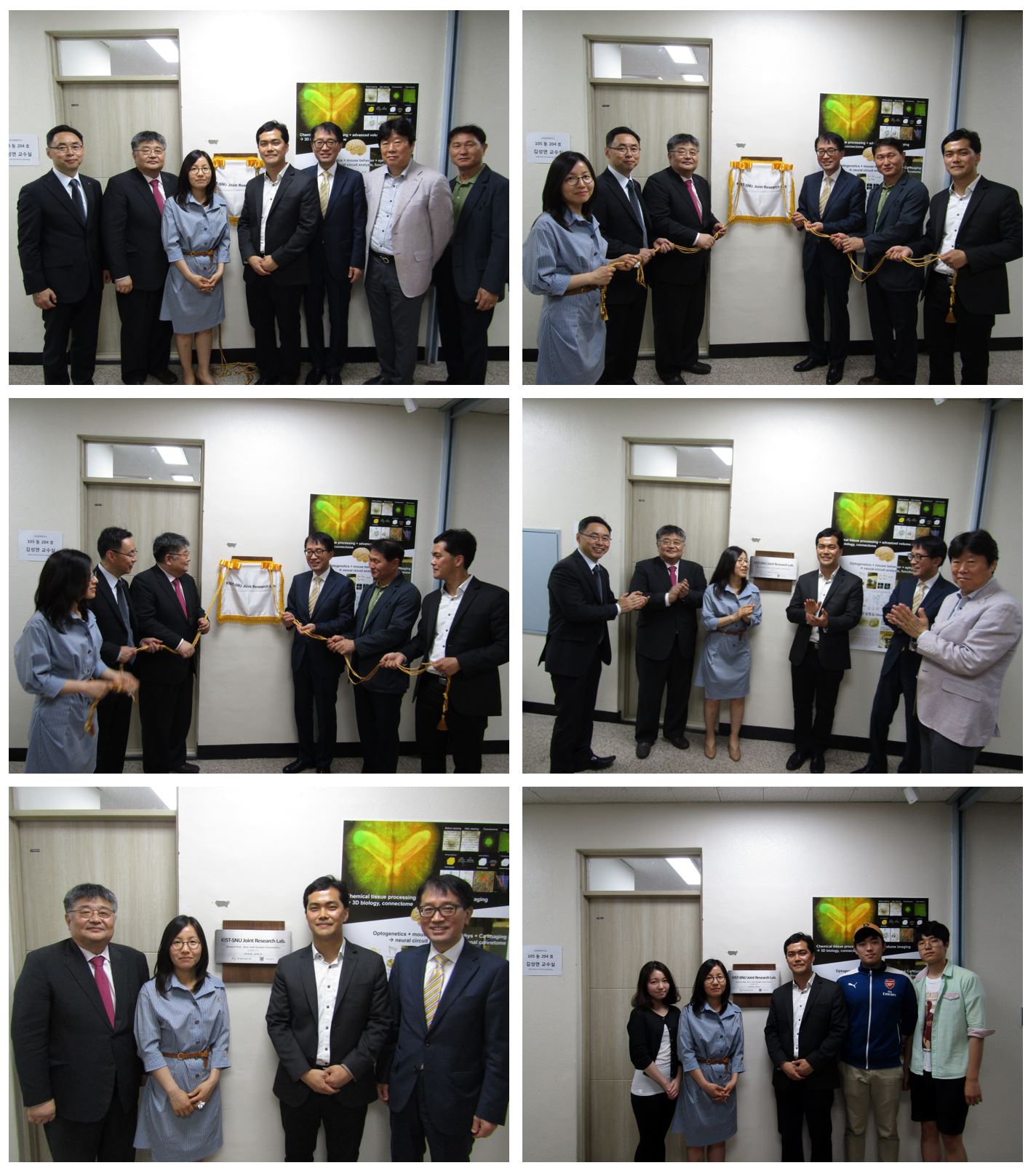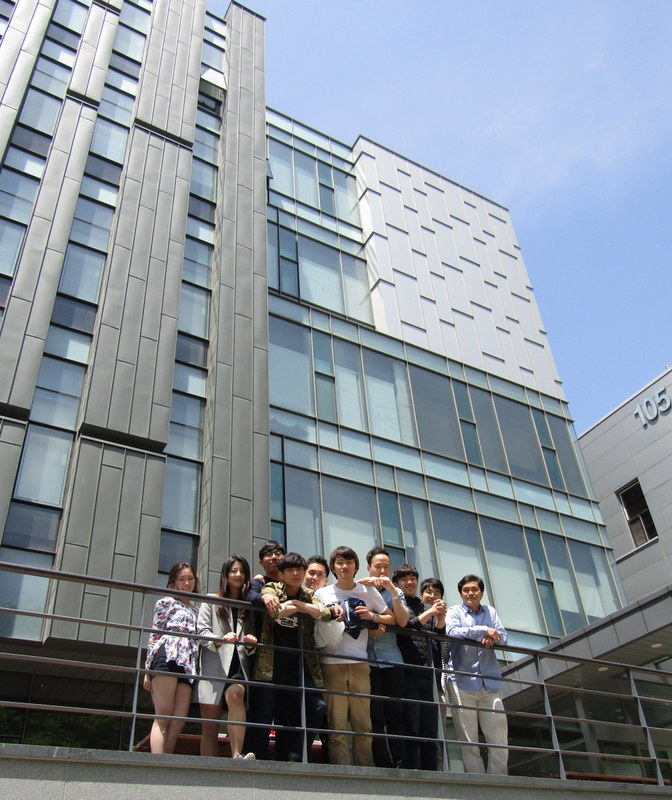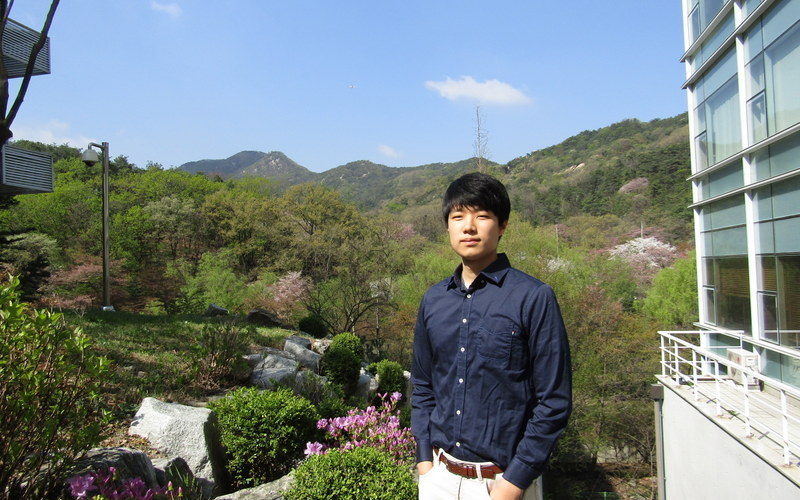Jaewoo, an undergraduate student who has been working hard in the lab since the K-Lab opened, won the best poster award from Brain-Mind-Behavior Program. Professors added that he won the first place by a wide margin. Congratulations!!
Prof. Liqun Luo visits the Kim lab
The K-Lab welcomes Han-Eol, Dong-Jun, Minjin as PhD students
Han-Eol, Dong-Jun and Minjin, who have been working in the lab since the lab started, formally joined the K-Lab as PhD students. They are now in either School of Biological Sciences or Interdisciplinary Program in Neuroscience. These outstanding students have been doing super well, but now it is a whole another beginning. Cannot wait to see them blossoming as excellent neuroscientists!
Water gun battle against the Jinny Kim lab
Our first paper is published in Molecules and Cells
Our first paper (a review paper on tissue clearing and labeling techniques) is now online in Molecules and Cells website. A small contribution to the tissue clearing field and to the Korean Society for Molecular and Cellular Biology. Hope you find this review useful and cite when discussing tissue clearing/labeling! And great job, Jinyoung and Minjin!
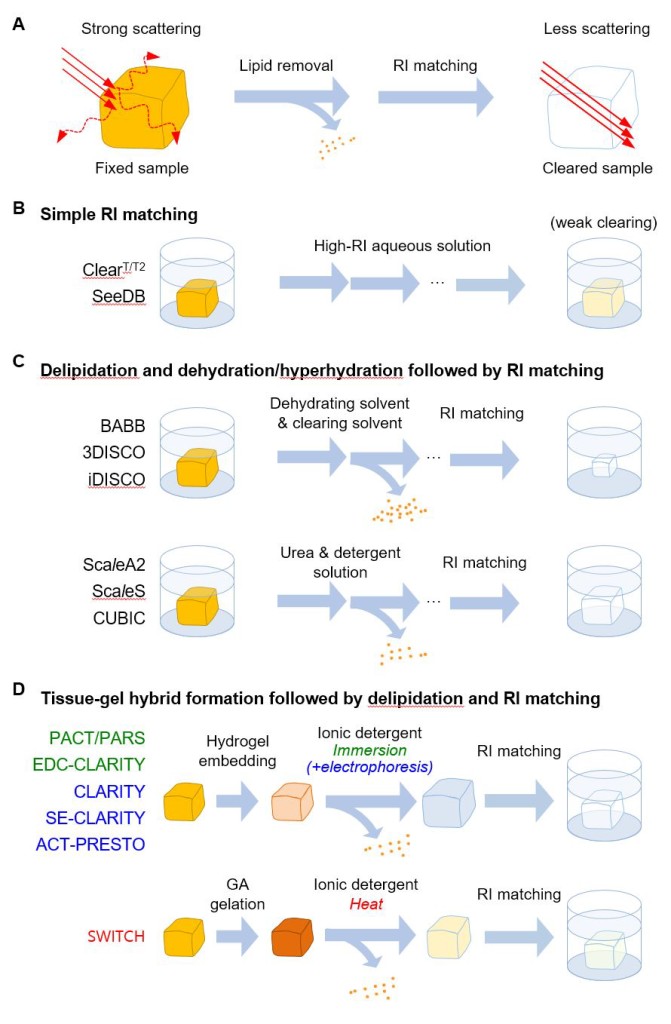
Fig. 1. Tissue clearing techniques. (A) Light scattering in biological tissues can be reduced by removal of lipid and RI matching. (B) Simple immersion in a high-RI aqueous solution renders the tissue modestly transparent by homogenizing scattering throughout the sample. (C) Delipidation and dehydration / hyperhydration followed by refractive index matching. (Top) For solvent-based clearing, the tissue is incubated in dehydrating solvent for delipidation and dehydration, and is moved to a high-RI clearing solvent where RI matching and additional delipidation occur. (Bottom) The sample is placed in an aqueous solution that contains high concentration of non-ionic detergent and denaturant, where delipidation, hyperhydration, and RI matching take place. (D) A biological sample is first transformed into a tissue-gel hybrid by hydrogel embedding (Top) or glutaraldehyde fixation (Bottom), where the gel network increases the tissue integrity. The tissue-gel hybrid then can withstand extensive delipidation by incubation in ionic detergent (SDS) assisted by electrophoresis or heating.
The launching ceremony for KIST Joint Research Lab
K-Lab was selected for “KIST Joint Research Lab” grant program! We had a signboard hanging ceremony. See the news article for the details about the grant (in Korean): http://news1.kr/articles/?2622594
Lab relocation to the Institute of Molecular Biology and Genetics
The Kim lab welcomes Dongyoon as the first graduate student
The Kim lab is now affiliated with two more departments
The Kim lab is now affiliated with the Department of Chemistry and the School (= Department) of Biological Sciences. Especially Sung-Yon will participate in teaching in the School of Biological Sciences. Students may apply to the M.S./Ph.D. program of the School of Biological Sciences to pursue graduate research in the Kim lab.
